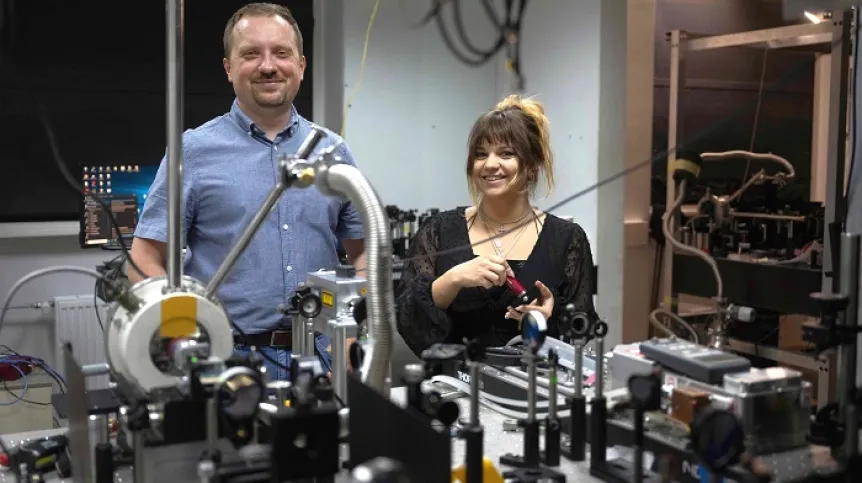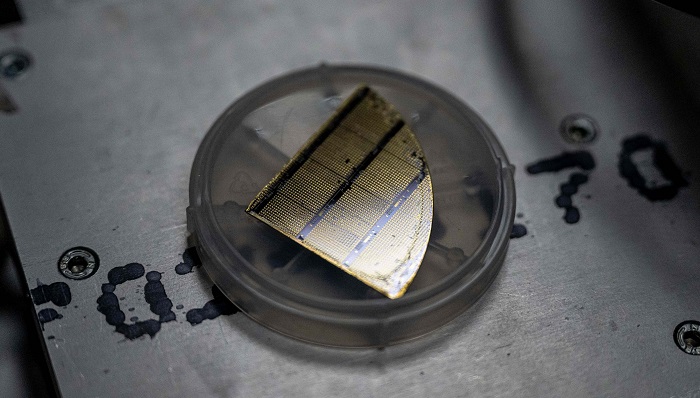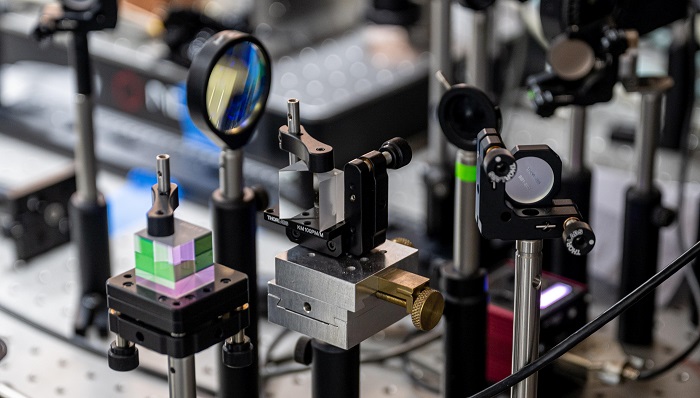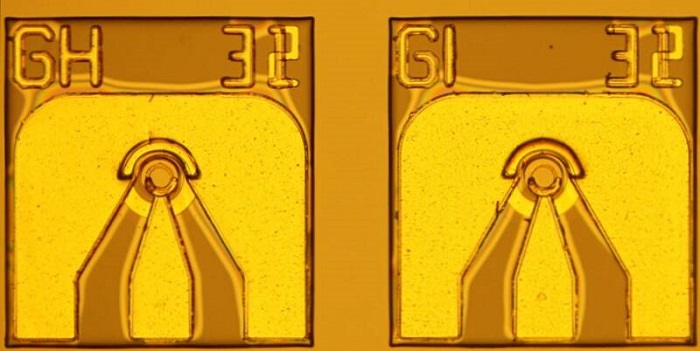
Scientists from Wrocław University of Science and Technology offer a new perspective of the principles of operation of semiconductor lasers. The results of their important laser physics discovery have just been published in the journal Nature Photonics.
The originator of the study is Dr. Maciej Pieczarka from the Faculty of Fundamental Problems of Technology, who performed his groundbreaking experiment in the laboratories of the Wrocław University of Science and Technology together with doctoral candidate Aleksandra Piasecka.
Representatives of Wrocław University of Science and Technology informed about the study published in Nature Photonics in a press release sent to PAP.
LASER BREAKTHROUGH
'We carried out our research using a device that is virtually indistinguishable from those currently applied in industry, e.g. in smartphones, telecommunications, etc.', says Dr. Pieczarka.
‘The observation of Bose-Einstein condensation of light in such a device means a completely new insight into the principles of semiconductor lasers!', he adds.

Fragment of a board with studied laser devices. Credit: Wrocław University of Science and Technology
The current principles behind these lasers consist of achieving population inversion in the laser's active region, so that light trapped in the laser cavity can be amplified by a stimulated emission process. In laser action, the amplified light (photons) has the same phase and wavelength, which gives the light beam its characteristic properties.
In their project, the researchers chose a laser with a non-standard spectral alignment between the active region's wavelength and the laser resonator's wavelength.
'Interestingly, such alignment is usually avoided in industrial use to prevent the device from having a slightly inferior performance', says Dr Pieczarka. Under these conditions, spontaneous emission and absorption in the laser caused the photons trapped in it to 'thermalize', i.e. behave like a gas at a given temperature that is trapped in a box.
By increasing the driving current, i.e. also the number of photons in this gas, the scientists caused them to condense to the lowest-energy laser mode, i.e. to form a Bose-Einstein condensate at room temperature. All of this happened under conditions where there was no population inversion in the laser.
'This is important from the physics point of view, as well as from the application point of view because the emission from such a photon condensate also has similar properties as if the laser were operating under classic conditions', says Dr Pieczarka. In this case, however, the mechanism of operation is completely different, he adds.
In addition, researchers from the Wrocław University of Science and Technology investigated the thermodynamic properties of the photon gas.
'We verified that the photons in our laser behave exactly like a textbook boson gas with a well-defined temperature', says Aleksandra Piasecka. She explains that the researchers measured the parameters of the so-called equation of state of the gas, confirming compliance with the fundamental theory.
WHY IS THIS IMPORTANT?
Dr. Pieczarka says that no one yet knows exactly what the properties of lasers operating in this mode will be, as it is a completely new field of science. This mode of laser operation also has enormous application potential.

Equipment in the laser laboratory. Credit: Wrocław University of Science and Technology
VCSEL lasers with a large active aperture (the Wrocław Tech laser had an aperture of 23 micrometres) are known to emit multimode light. This means that they give off light in several different wavelengths at the same time, which limits their properties, such as emission stability. It is a well-known limitation of large-scale VCSEL lasers.
'In contrast to the current knowledge, our laser condensed light (instead of lasing) to a single wavelength, solving this technological problem', the researcher explains.
Optimisation of lasers operating in Bose-Einstein condensation mode could achieve much better beam performance, coherence, and stability of such lasers. Such properties of large-area lasers are crucial in applications including LiDAR-type systems used in autonomous vehicles.
The paper 'Bose-Einstein condensation of photons in a vertical-cavity surface-emitting laser' was written in close collaboration with the scientists working in the Photonics Team at the Institute of Physics of the Łódź University of Technology: Professor Tomasz Czyszanowski, Dr. Marcin Gębski and Dr. Michał Wasiak. Professor Axel Pelster from RPTU Kaiserslautern provided theoretical support.
Even before submitting his paper for publication, Dr. Pieczarka met Dr Ross Schofield from Professor Rupert Oulton's group working at Imperial College, London, who presented the same results obtained at the same time, but in a slightly different open-cavity laser system.

Close-up of individual lasers under a microscope. Credit: Wrocław University of Science and Technology
Instead of competing and racing to publish first, the two groups decided to work together and send the results for review at the same time. The papers were published simultaneously in Nature Photonics. The discovery was therefore confirmed by two independent groups whose work showed different aspects of the same effect.
More on this topic on the university website. (PAP)
PAP - Science in Poland
lt/ bar/ kap/
tr. RL













